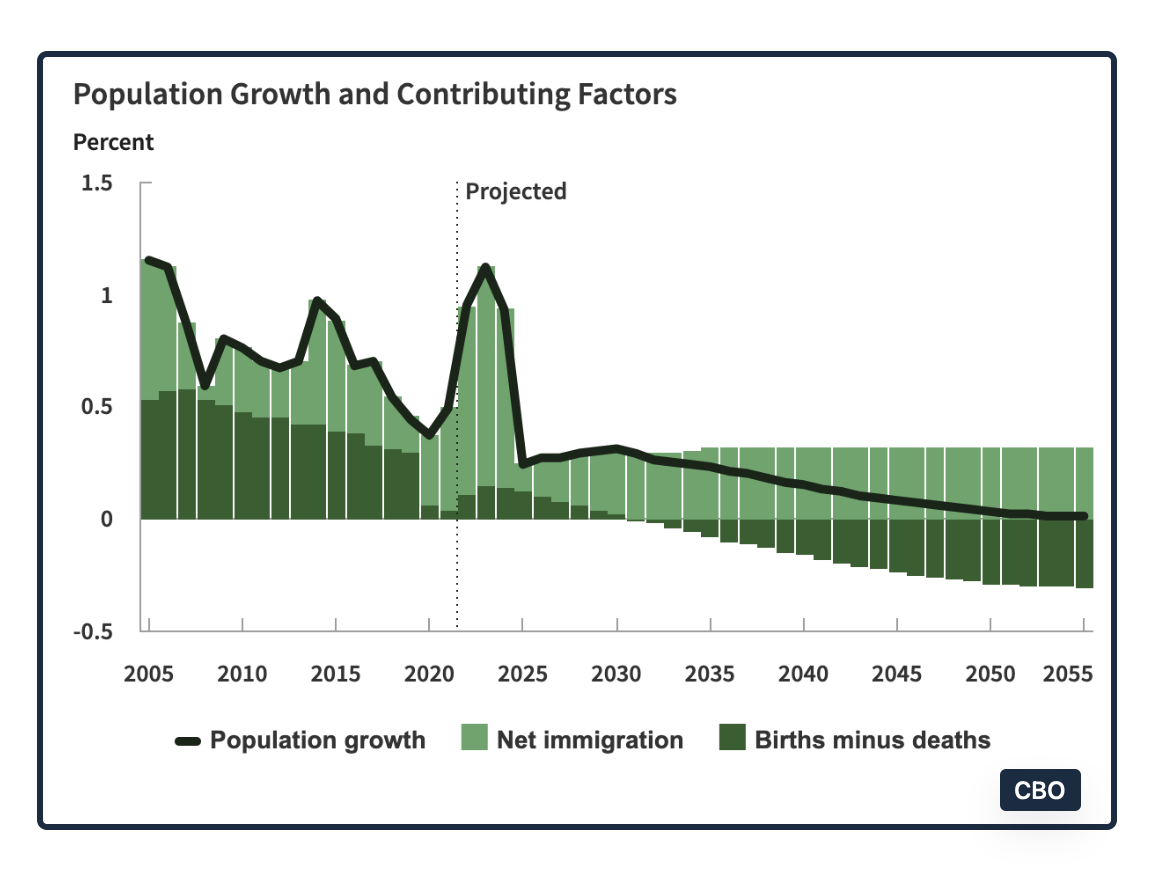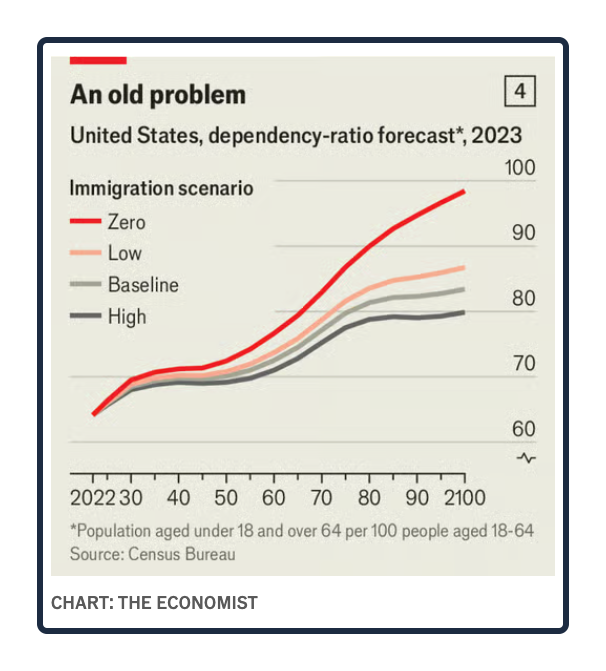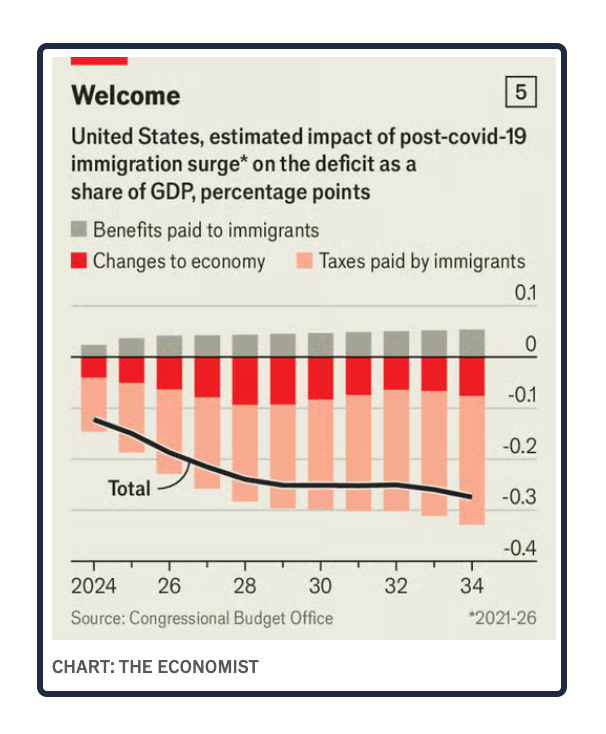
Why We Need to Count Cargo Containers
October 12, 2025
How Major League Baseball is Hanging On By a Thread
October 14, 2025We’ve already looked at how the plunge in immigration can affect innovation.
However, there is much more.
Immigration Impact
With many more people arriving than leaving, annual net immigration has been close to 2.5 million people. Now though, with a “Zero Migration America,” the CBO (Congressional Budget Office) predicts a hit to the population growth from which we all benefit. They especially cite reduced labor force additions, aged 25 to 54:

As a result, there will be fewer workers, fewer innovators, fewer people to pay the Social Security needed by an aging population:
 With lower skilled newcomers becoming cleaners and meatpackers, for example, others can move to more skilled work. Then, at the other end, The Economist reminds us that four of the seven founders of the “magnificent seven” (Alphabet (parent company of Google), Amazon, Apple, Meta Platforms (parent company of Facebook and Instagram), Microsoft, Nvidia, and Tesla) were immigrants. According to an IMF economist, a 1% increase in migrants’ share of the adult population in a rich country propels the GDP to an extra 2% of growth.
With lower skilled newcomers becoming cleaners and meatpackers, for example, others can move to more skilled work. Then, at the other end, The Economist reminds us that four of the seven founders of the “magnificent seven” (Alphabet (parent company of Google), Amazon, Apple, Meta Platforms (parent company of Facebook and Instagram), Microsoft, Nvidia, and Tesla) were immigrants. According to an IMF economist, a 1% increase in migrants’ share of the adult population in a rich country propels the GDP to an extra 2% of growth.
Furthermore, immigrants add more in taxes to the federal budget than they receive in benefits:

Our Bottom Line: Human Capital
But most crucially, immigrants bring us the human capital that spurs economic growth.
Composed of land, labor, and capital, the factors of production are the building blocks we use to make our goods and services. Those building blocks include human and physical capital. Defined as the knowledge with which we equip ourselves, human capital is intangible while we can see the machinery and tools and buildings that compose physical capital. As a result, we can see that new machinery boosts productivity.
And yet, immigrants have brought a massive amount of human capital:

Indeed though, returning to our title, immigrants’ human capital can be invisible.
My sources and more: Thanks to The Economist for their look at the plunge in U.S. immigrants. From there the CBO (congressional Budget Office) had more discussion and data.
![econlifelogotrademarkedwebsitelogo[1]](/wp-content/uploads/2024/05/econlifelogotrademarkedwebsitelogo1.png#100878)




